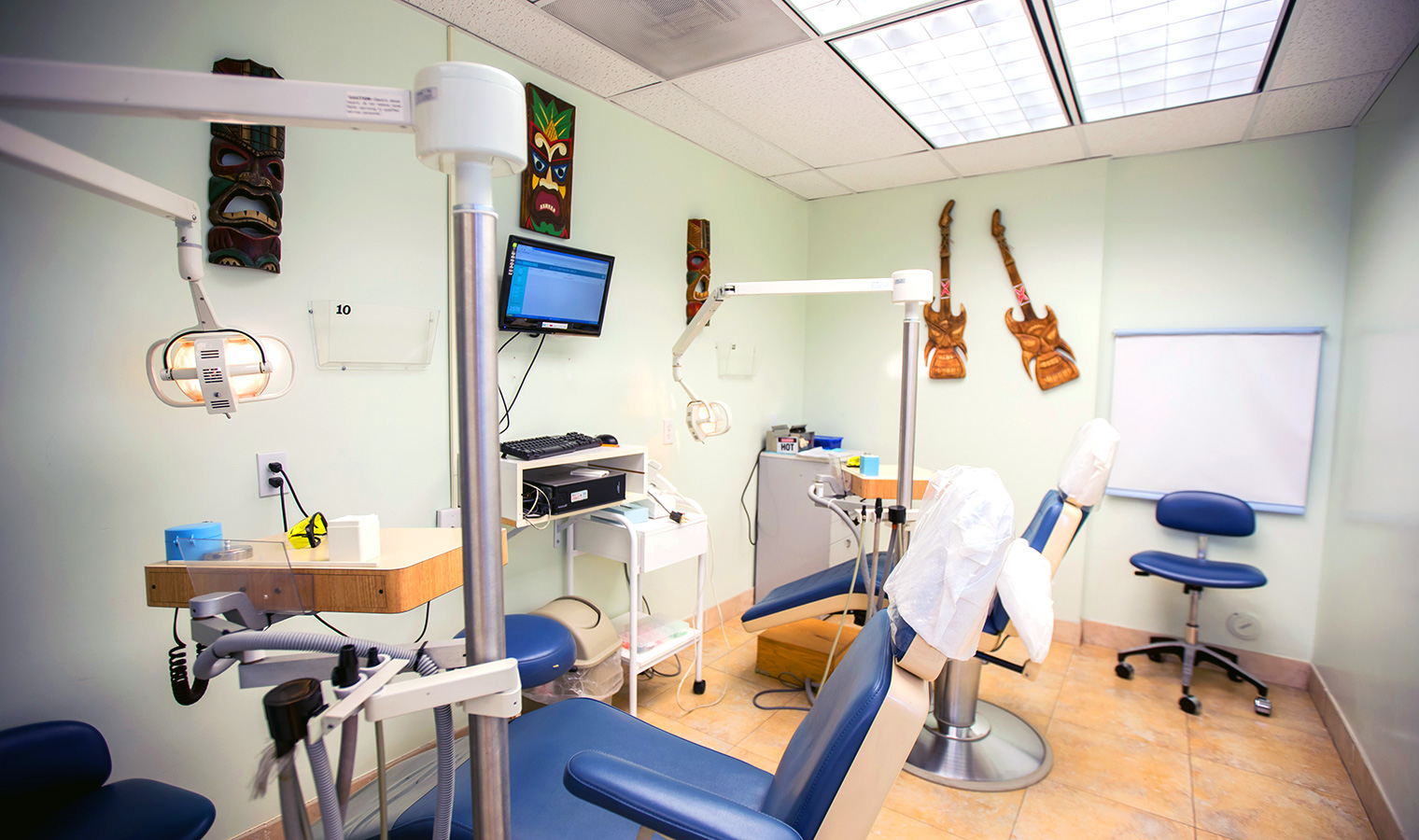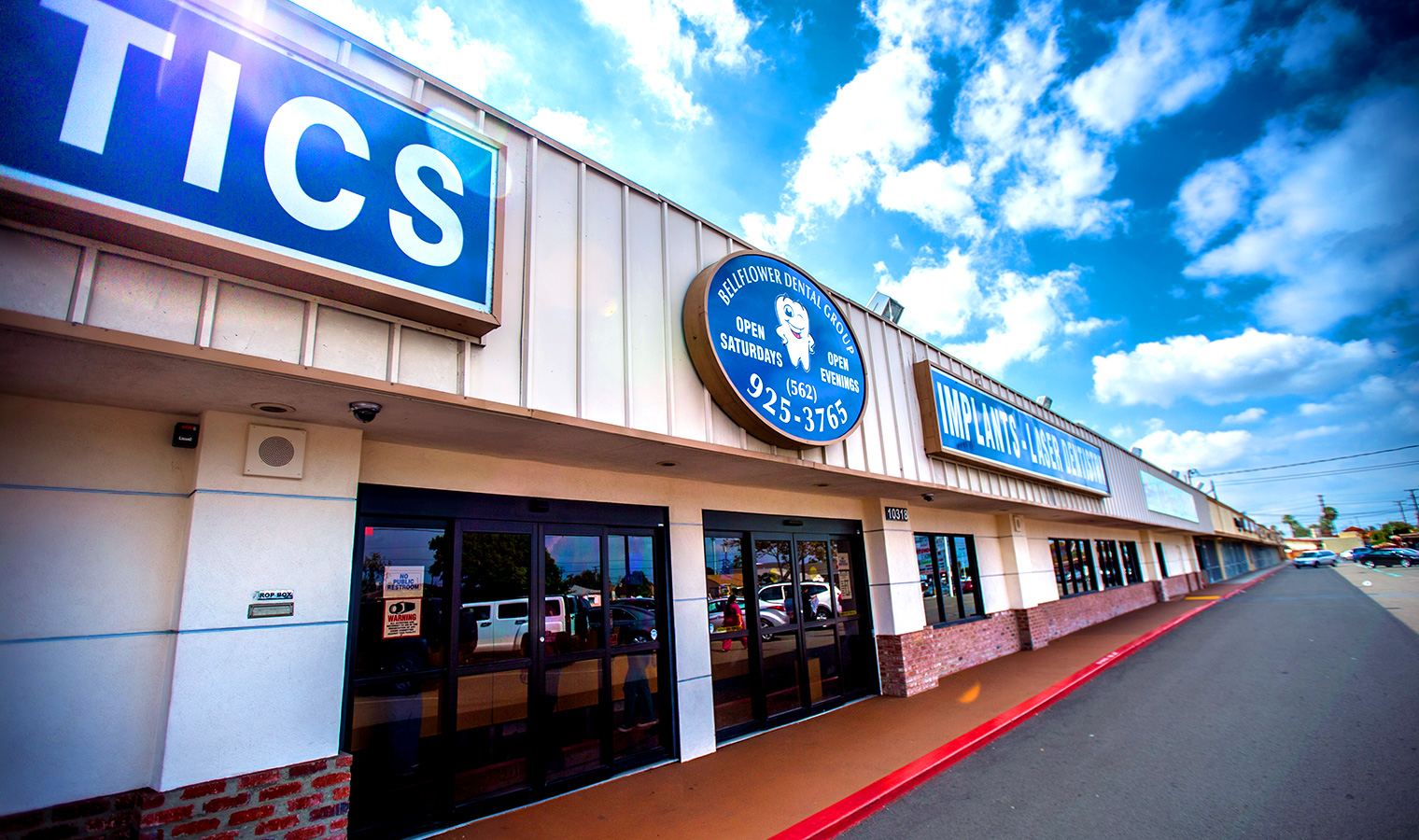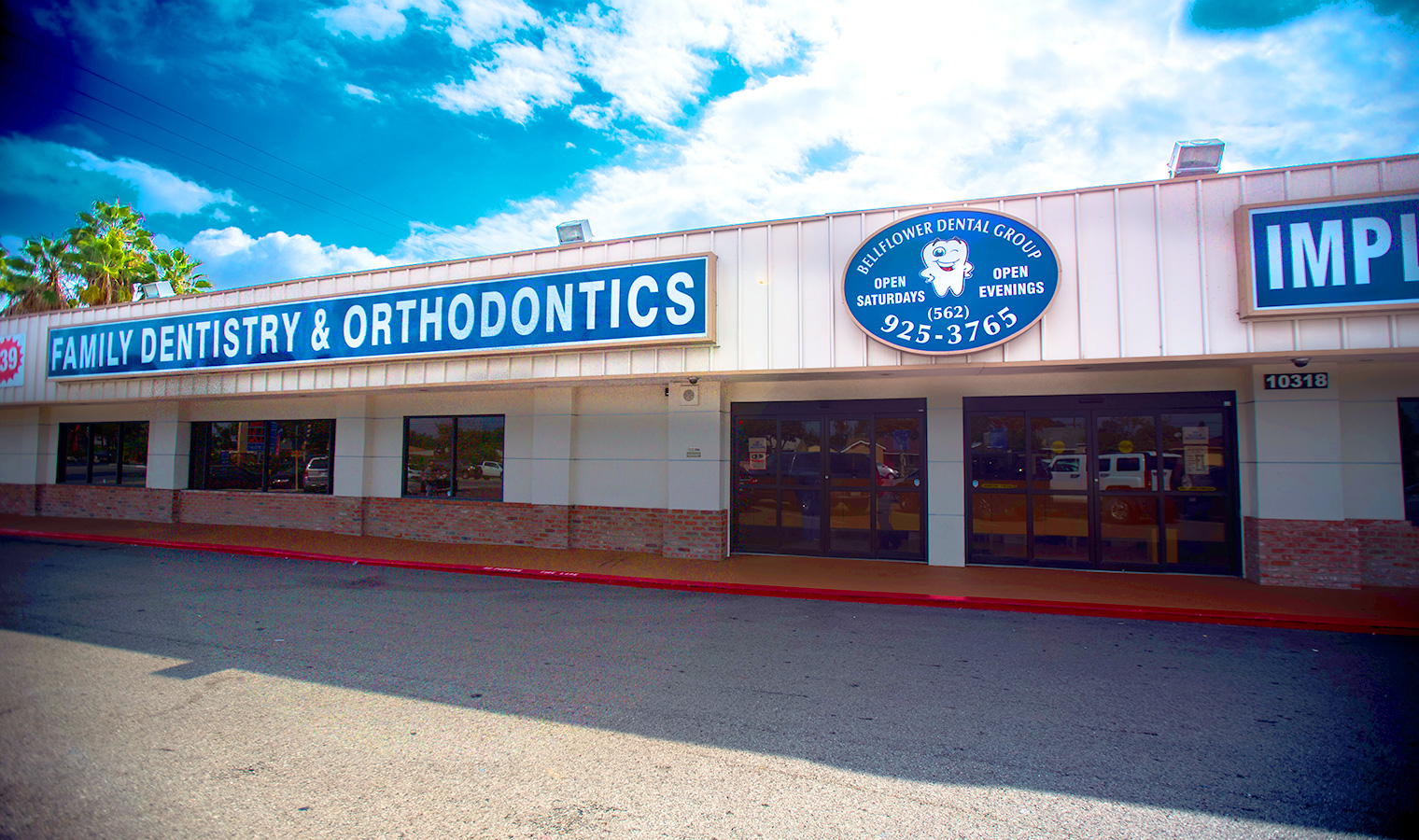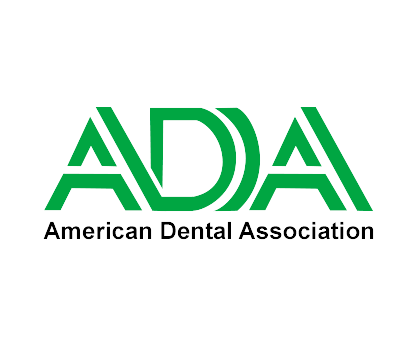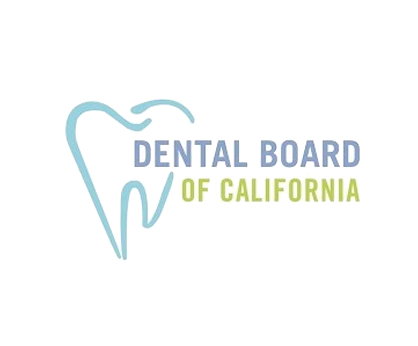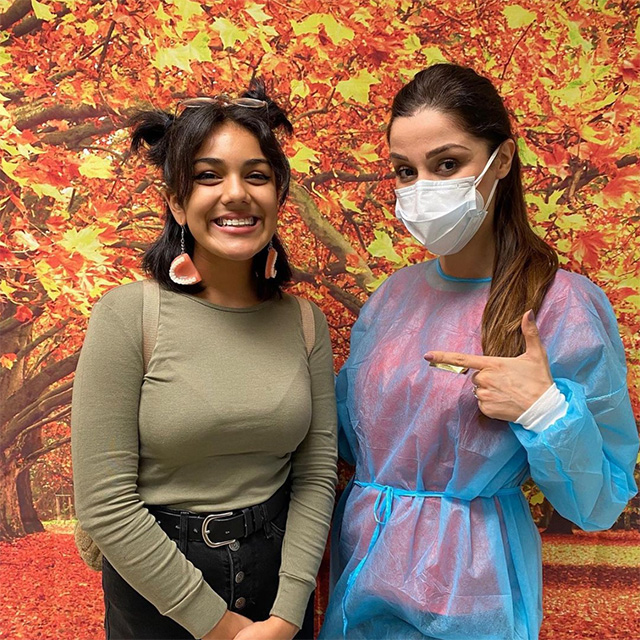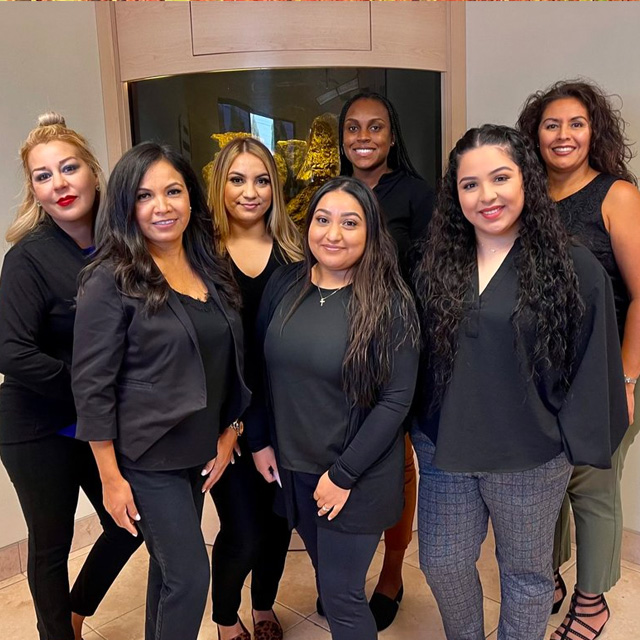Teeth whitening can quickly make your smile pearly white, but the method you choose can impact just how fast you see results.
If you have a habit of drinking coffee and tea, you might notice that your teeth are yellower and duller than you want. And even if you don’t have one of these popular teeth-stainers, it’s natural for your smile to discolor over time gradually. Brightening your smile with teeth whitening is a popular method for boosting patients’ appearance quickly and making them feel proud of their pearly whites. Even A-list celebrities have been known to give their teeth a makeover with teeth whitening so that they have a red-carpet-ready smile.
There are two types of dental stains: extrinsic and intrinsic. Extrinsic stains affect only the teeth’s outermost enamel layer. They’re typically caused by colorful or dark foods and drinks, like coffee, wine, and popsicles, coming in contact with your smile and gradually staining them. Intrinsic stains extend past the enamel into the softer, more sensitive dentin layer below. They often appear due to dental trauma and injuries, certain medications, dental decay, and genetic factors.
When looking into how to whiten teeth, the two main ways people use are professional teeth whitening and over-the-counter products. Professional whitening is the most powerful and can often tackle both extrinsic stains and decades-old intrinsic ones. To do this, you can either schedule a whitening appointment with a cosmetic dentist or have them prepare custom-made whitening trays to use at home. Over-the-counter (OTC) products include whitening strips, toothpastes, and mouthwashes that you can easily get off the shelves at the supermarket or pharmacy. They are used to remove surface-level stains.
How long does it take to whiten teeth? Which type of whitening you choose can affect not just your final results but how long it takes to get them.
Professional Teeth Whitening
Professional teeth whitening is the fastest and most effective way to brighten your smile. These methods use potent peroxide to remove even deep stains trapped below the tooth’s surface. These results will last months or even years longer than store-bought alternatives.
In-Office Teeth Whitening
For the best teeth whitening, it’s always recommended that you go into your dentist’s office for a professional session. This approach uses the most potent dental peroxide available and is the only way to get a pearly white grin in 30 minutes to an hour. A cosmetic dentist will isolate your teeth, covering your gums with a barrier to protect them from the bleaching gel. By activating the gel further with a curing light, our cosmetic dentists can help you lift more than a decade of tooth stains. With your dentist supervising, we can ensure you get the best shade for a naturally flawless smile.
At-Home Teeth Whitening Kit
If you don’t have time for in-office whitening, your cosmetic dentist can instead prepare you a professional whitening kit. This technique uses custom trays tailored to your unique smile and potent dental peroxide that we provide you. This bleaching gel isn’t as powerful as what our dentists use in our office, but it’s much more effective than anything you can buy at the store. You can achieve the same level of brightness at home as you would in the dental chair after one to two weeks of daily usage.
Are home teeth whitening kits safe? As long as you use them exactly as your cosmetic dentist instructs you, they are entirely safe to use. Since your trays are molded to fit your mouth precisely, they only leave just enough space for you to apply the peroxide gel. There’s little to no chance of accidentally touching your vulnerable gums, which can be a problem with generic whitening strips. You may experience slight tooth sensitivity, but this typically goes away after a few days.
Also, be sure only to wear your trays for the directed time. Our dentists adapt the bleaching gel we provide to suit each patient’s specific needs, so the exact daily usage can change. Some patients might have their trays on for a couple of hours each day, while others can wear them overnight.
Over-The-Counter Teeth Whitening
Store-bought teeth whitening products are more affordable for patients on a tighter budget. Still, they are not as powerful or effective as professional treatments. OTC strips, toothpastes, and rinses can only fix surface-level discoloration. Even once you start seeing results, they can only minimally lighten your teeth by one or two shades.
Whitening Strips
OTC whitening strips are a bit slower than professional home kits, especially since you’re advised only to wear them for 30 minutes to an hour each day. It usually takes about two weeks for you to start seeing results, though it can sometimes require three or four weeks to brighten your smile by even one or two shades.
You want to be extra careful when using these whitening strips. Without a dentist’s careful eye or custom trays designed for your specific smile, misusing them can cause problems for your teeth and gums. If you wear them too long or place them over your gums, you can hurt or damage your mouth. For your smile’s safety, be sure to look for the American Dental Association Seal of Approval on the box before buying your set and follow the directions closely.
Toothpastes and Mouthwashes
You can also use special whitening toothpastes and mouthwashes twice a day as part of your normal hygiene routine. Whitening toothpastes use both peroxide and abrasives to polish and bleach teeth, so most patients start seeing results in two to six weeks. However, since mouth rinses only use hydrogen peroxide, the effects become noticeable after about three months of consistent usage.
Because they take longer to work, many patients choose to use these products to maintain their results from professional teeth whitening. However, don’t immediately follow your whitening treatment with peroxide toothpastes and rinses. Your teeth will be a little sensitive in the first few days, and you’ll want to wait until this passes before applying more peroxide to your smile.
How Long Do Your Teeth Stay White After Whitening?
Depending on which method you choose, your bright white smile can last anywhere from a few months to a couple of years. Professional whitening methods, which utilize more powerful peroxide to take care of even extrinsic stains, have longer lifespans than generic products.
In-office whitening: 1 to 2 years on average and up to 3 years
Professional home kit: 1 to 2 years
Whitening strips: 4 to 6 months
Toothpastes and rinses: 3 to 4 months
After whitening teeth, stay away from brightly colored or dark foods and drinks for at least 24 hours, though 48 hours would be best. Notorious teeth stainers include coffee, tea, red wine, berries, fruit juices, curries, popsicles, tomato sauces, soy sauce, balsamic vinegar, and sports drinks. Your porous teeth will be especially vulnerable to absorbing these snacks’ pigments, quickly leading to stains. You also shouldn’t use any tobacco products, smokeless or otherwise, to prevent the tar and nicotine in them from seeping into your teeth too.
Once this initial period has passed, you should still minimize how often you have these snacks. When you have them, follow up with water to wash any residue off of your teeth. The longer they stay on the enamel, the worse the damage will be. With drinks, use a straw to limit the amount of contact these liquids have with your teeth. You should also brush your teeth afterward if you can, but wait about 30 minutes to do so with acidic foods like fruits and coffee. Brushing immediately after them can spread the acidity around and help promote tooth decay.
Is There A Way To Permanently Whiten Teeth?
While there is no one-time treatment that keeps your smile pearly white, there are some other cosmetic dentistry procedures that can last years and even decades. Dental bonding and porcelain veneers are more comprehensive procedures than teeth whitening, focusing on changing a tooth’s whole appearance and not just the color. They are recommended for patients who want long-lasting smile brightening results and also want to take on a wide range of other aesthetic dental issues:
Gaps between teeth
Minor crookedness
Irregularly shaped teeth
Cracks and chips
Wear and tear
Tooth bonding molds composite resin over your teeth to change your original smile’s color, size, and shape. Once hardened with a curing light, dental bonding lasts between 4 and 8 years on average. For an even longer-lasting smile makeover, dental veneers are a great option. This treatment involves bonding a 0.5mm-thin porcelain shell over your original tooth. Veneers have an extra advantage that bonding doesn’t: they’re highly resistant to stains. Porcelain isn’t porous like enamel or composite, so your teeth facades will be just as pearly white after 15 or 20 years as they were on day one.
